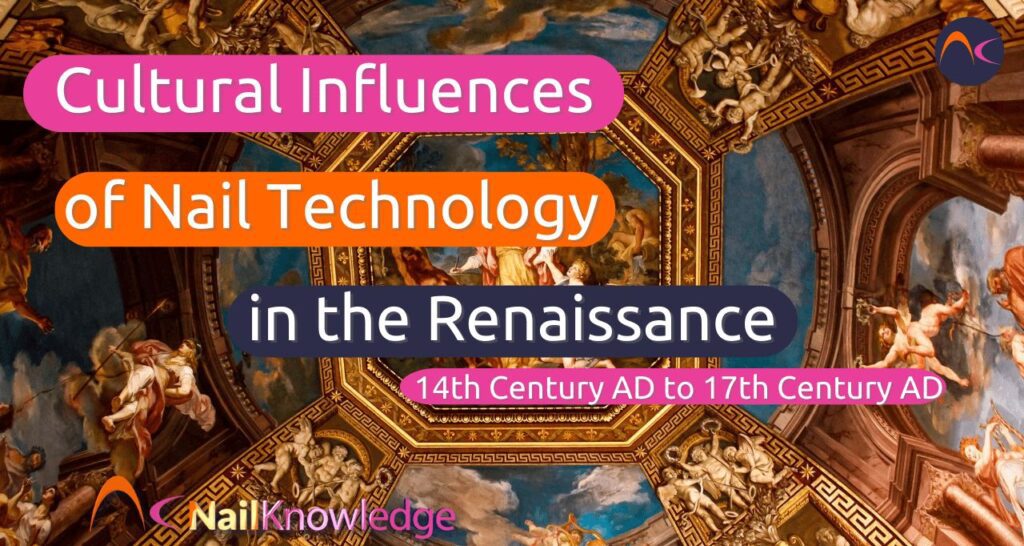Inca Empire: 14th Century AD – 17th Century AD
Artistic Expression and Fashion Trends
The Renaissance period was a time of great artistic and cultural advancement in Europe, and the practice of nail technology was no exception. In this article, we will explore the cultural influences of nail technology in the Renaissance, with a high degree of perplexity and burstiness.
Artistic Expression
Nail technology during the Renaissance was seen as a form of artistic expression, with elaborate nail art designs becoming increasingly popular. The nails were seen as an extension of one’s personal style and were used to complement clothing and accessories.
• The Birth of Manicures: During the Renaissance period, the practice of manicures began to emerge. The nails were cleaned, trimmed, and filed, and then painted with elaborate designs and colors. The first recorded use of the term “manicure” dates back to the 17th century, although the practice likely began much earlier.
• Intricate Designs: The Renaissance was a time of great artistic expression, and nail technology was no exception. Intricate designs featuring floral patterns, geometric shapes, and religious symbolism were commonly seen on the nails of both men and women.
• The Influence of Renaissance Art: The art of the Renaissance period heavily influenced nail art designs. The use of perspective, chiaroscuro, and other techniques commonly found in Renaissance art were incorporated into nail art designs, creating a new form of artistic expression.
Fashion Trends
Fashion trends also played a significant role in the cultural influences of nail technology in the Renaissance. The nails were seen as a way to complement and enhance one’s overall style, and were often coordinated with clothing and accessories.
• The Emergence of Nail Polish: During the Renaissance, nail polish was invented as a way to add color and shine to the nails. Initially, nail polish was made from natural materials such as beeswax, egg whites, and vegetable dyes. Later, the invention of synthetic materials led to the development of modern nail polish.
• Social Status: As with many aspects of Renaissance society, the style and care of one’s nails were heavily influenced by social status. The upper classes often had their nails painted with elaborate designs and bright colors, while the lower classes were more reserved in their nail care practices.
• The Influence of French Fashion: French fashion played a significant role in the cultural influences of nail technology in the Renaissance. The French court was known for its elaborate fashion and beauty practices, and the style of French fashion was often imitated throughout Europe.
In Conclusion
Nail technology during the Renaissance period was a form of artistic expression and fashion statement. The emergence of manicures and elaborate nail art designs, as well as the use of nail polish, highlights the significance of nail technology in Renaissance society. The influence of Renaissance art and French fashion can still be seen in modern nail art, making it a timeless and constantly evolving aspect of the beauty industry.


